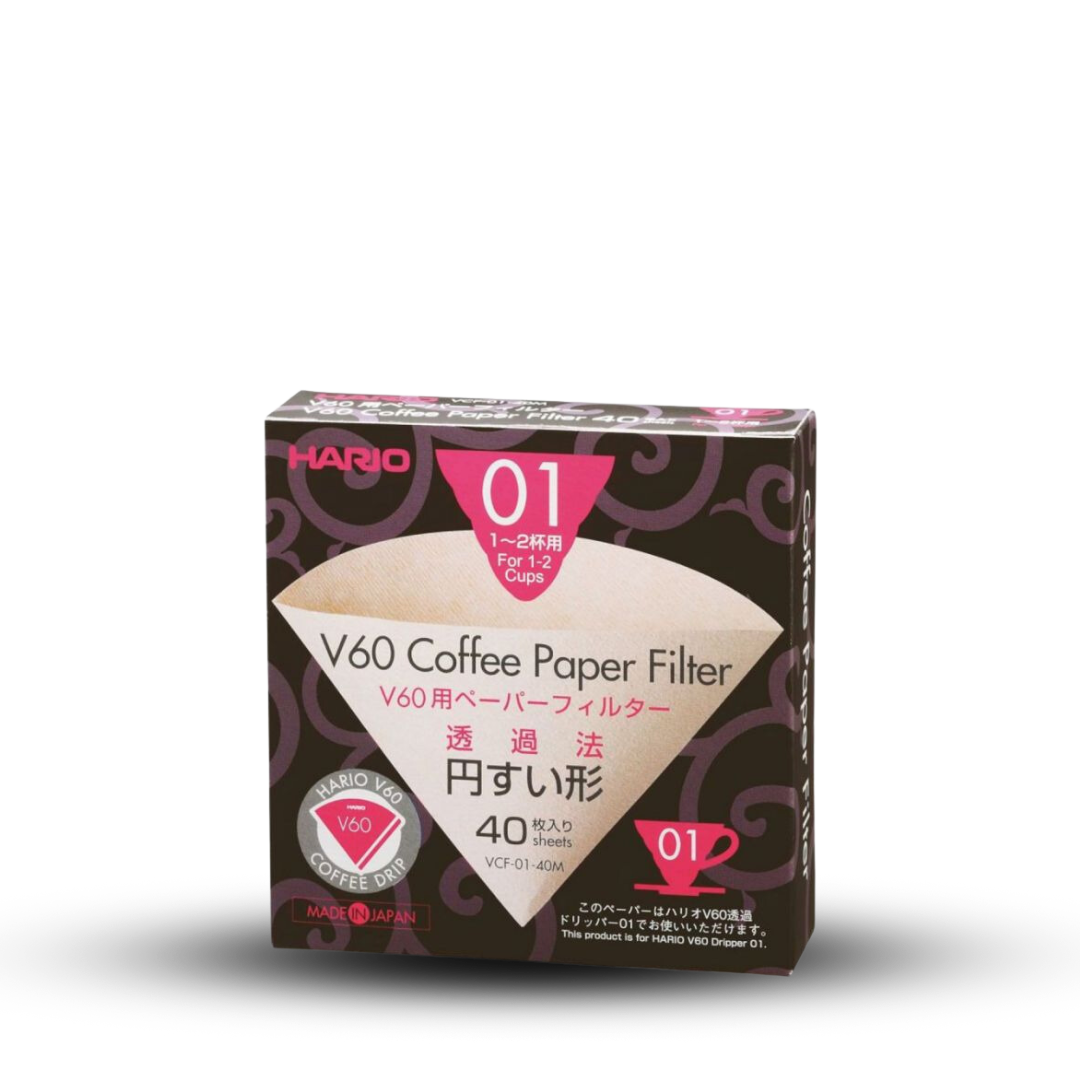The Hario V60 Filter Paper
The Hario V60 Filter Paper
Pickup available at Cannon Coffee Roasters
Usually ready in 24 hours
The humble Hario V60 filter paper for when your coffee deserves something better than a napkin. The Hario V60 filter paper is the unsung hero of pour-over coffee. It’s the piece of paper standing between you and your perfectly brewed cup of third-wave bliss. Yet, for all its simplicity, the Hario filter paper somehow manages to stir up more drama than a reality TV show. Let’s dive into this iconic product, the quirks, the controversies, and why it’s both indispensable and infuriating.
The Basics: Paper or Engineering Marvel?
At first glance, it’s just a piece of paper shaped like a cone. But don’t be fooled—this is no ordinary paper. It’s a Japanese-engineered, oxygen-bleached, precision-cut masterpiece that’s designed to filter your coffee with the finesse of a watchmaker.
Hario proudly markets its filters as providing optimal flow rate, ensuring your coffee extracts just right. Of course, this implies that every other coffee filter on the planet is sabotaging your brew. Is that true? Probably not. But it’s hard to argue with a company that has somehow made paper feel exclusive.
The Folding Fiasco
If you’ve ever opened a pack of Hario V60 filters, you’ve encountered The Fold. You know, that annoying crease you have to fold yourself before the paper will sit properly in your dripper. It’s like Hario is saying, “We could’ve folded this for you, but where’s the fun in that?”
The fold is a rite of passage for new V60 users. Mess it up, and your filter will collapse mid-brew, sending coffee grounds and your dreams of a perfect cup swirling into the abyss. But once you master it, you’ll feel like you’ve unlocked a secret society of coffee enlightenment. Or at least, you’ll stop swearing at your dripper.
The Great White vs. Natural Debate
Let’s talk about the real controversy: white filters versus natural (brown) filters. The white ones are bleached with oxygen to remove any paper taste, while the brown ones are supposedly more eco-friendly. Sounds straightforward, right? Wrong.
The white filters are marketed as being cleaner and better for taste, but the brown ones make you feel like you’re saving the planet, one cup at a time. Choosing between them feels like a moral dilemma. Do you want coffee that tastes marginally better, or do you want to be able to look Greta Thunberg in the eye? Decisions, decisions. We've made that easy for you - we only sell the unbleached versions - a coffee should never cost the earth no matter how good - and the differences are really marginal
The Price Tag: Wait, How Much?
Let’s not ignore the elephant in the room: Hario filters aren’t cheap. At some point, you’ll find yourself questioning whether paper cones should really cost this much. But then you’ll brew with a bargain-brand filter and realize the taste of sadness, regret and yearning for years gone by is not worth the savings.
Hario knows this, of course. They’ve cornered the market on coffee paper that makes you feel like an artisan, even if your morning ritual is more about surviving to 9am than artistry.
Why We Keep Coming Back
For all the quirks and eye-rolls, the Hario V60 filter paper is like that friend who’s perpetually late but always has the best gossip. Sure, it’s a little annoying, but you can’t stay mad because it delivers every single time.
The truth is, these filters work. They produce clean, crisp coffee that makes you forget the awkward folding and the existential dread of paper vs. environment debates. And when you finally sit down with that perfect cup, you’ll admit, that Hario was right all along.
A Love-Hate Relationship
So here’s to the little cone of overpriced, overachieving, overdemanding and "over here" paper that makes us feel like coffee royalty. Annoying? Yes. Worth it? Absolutely.


